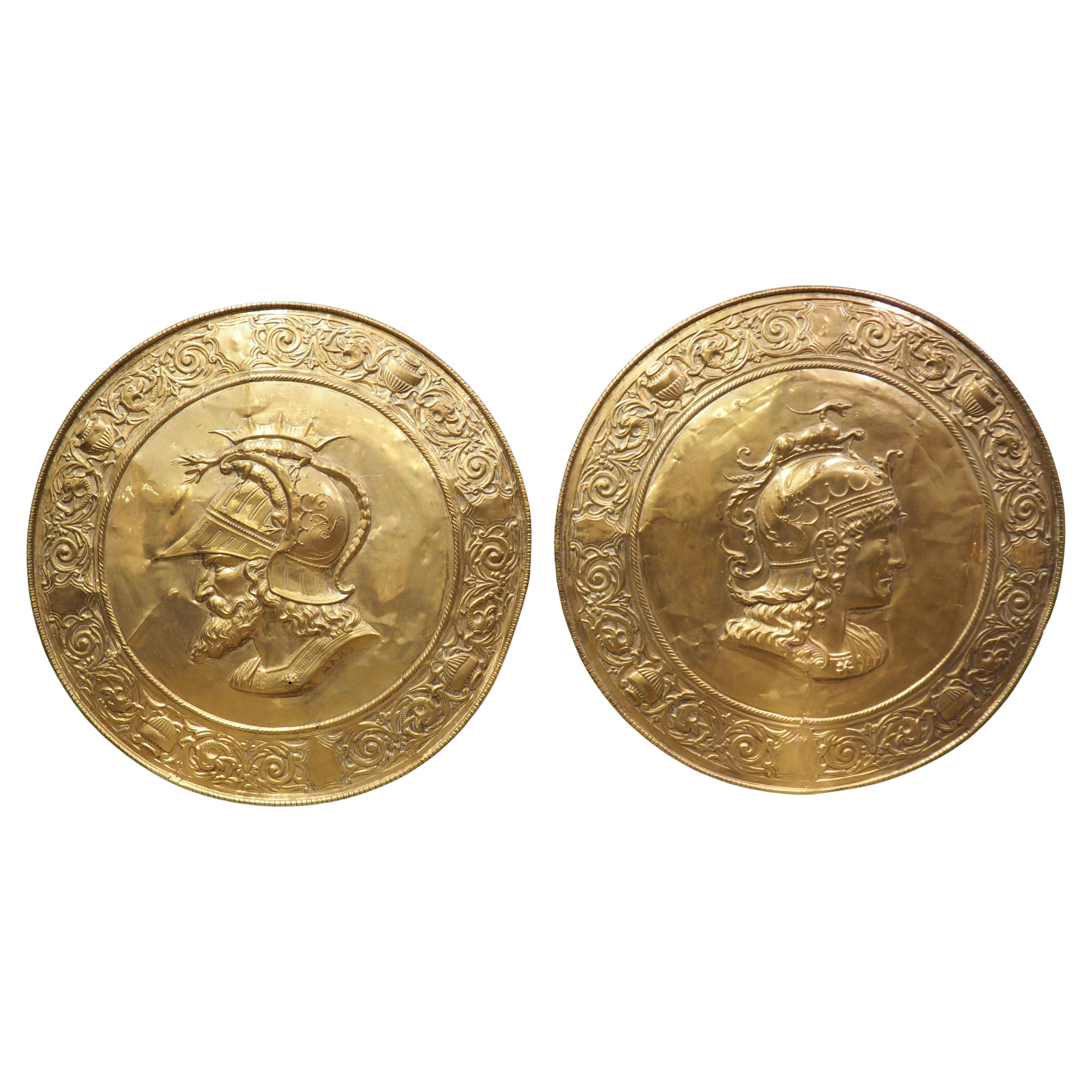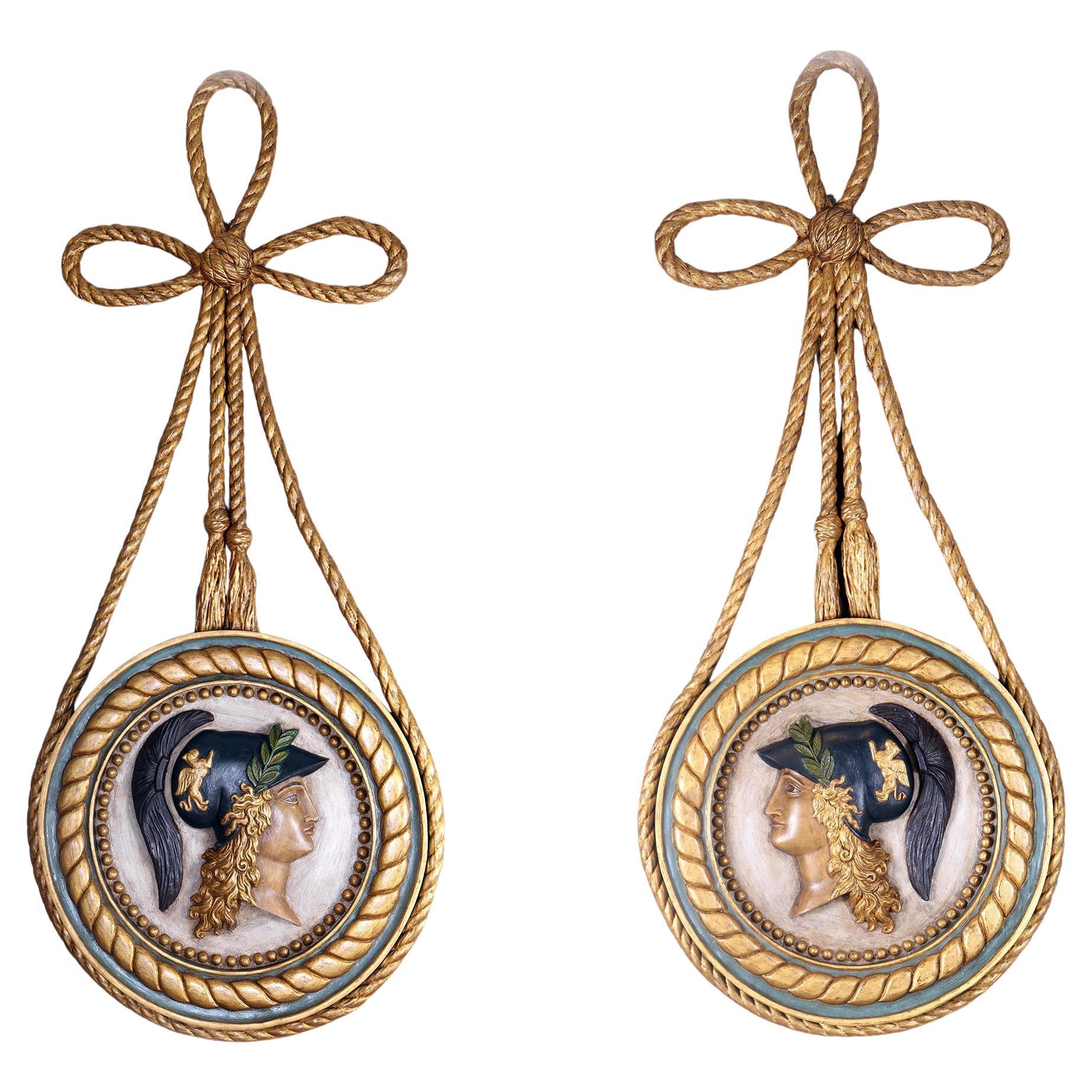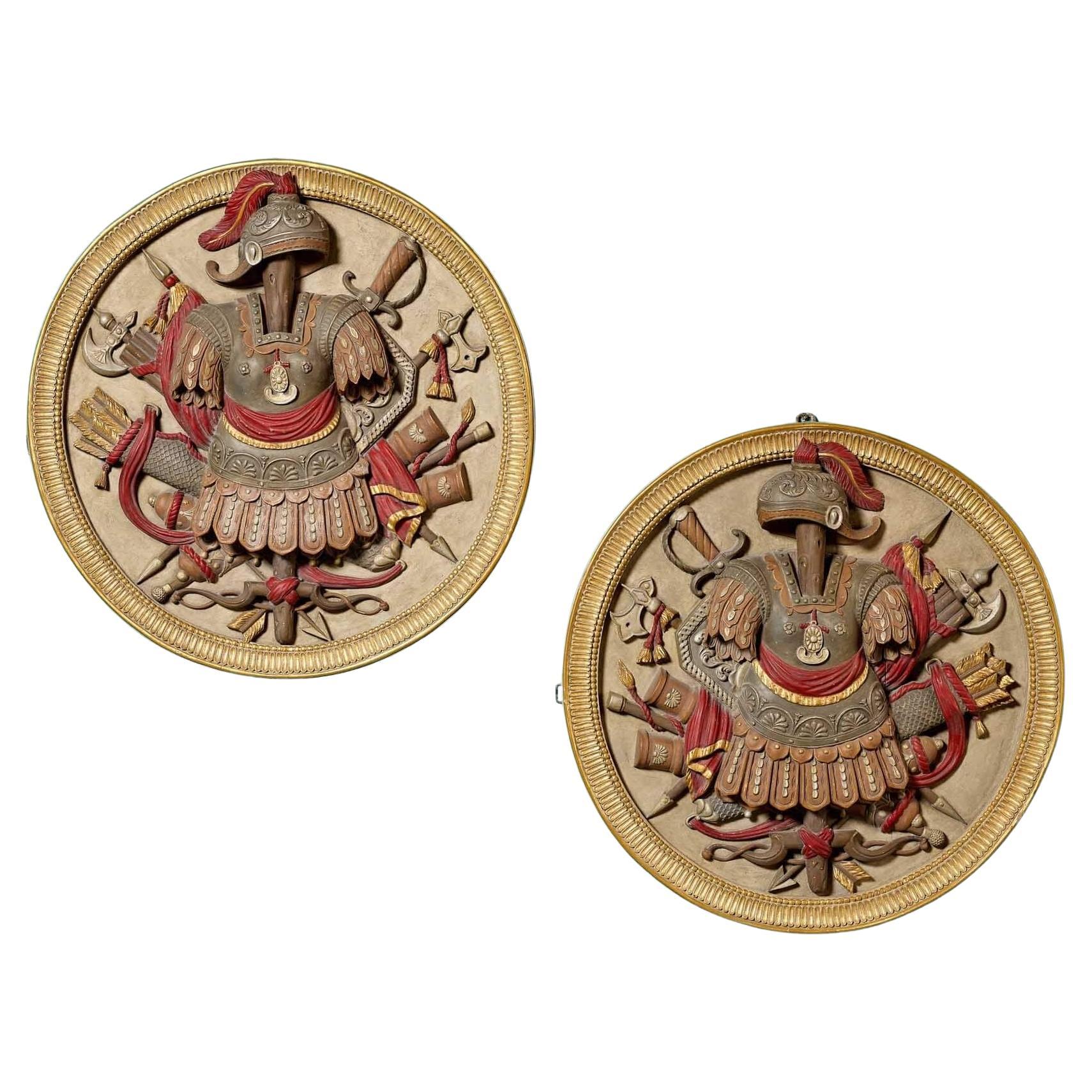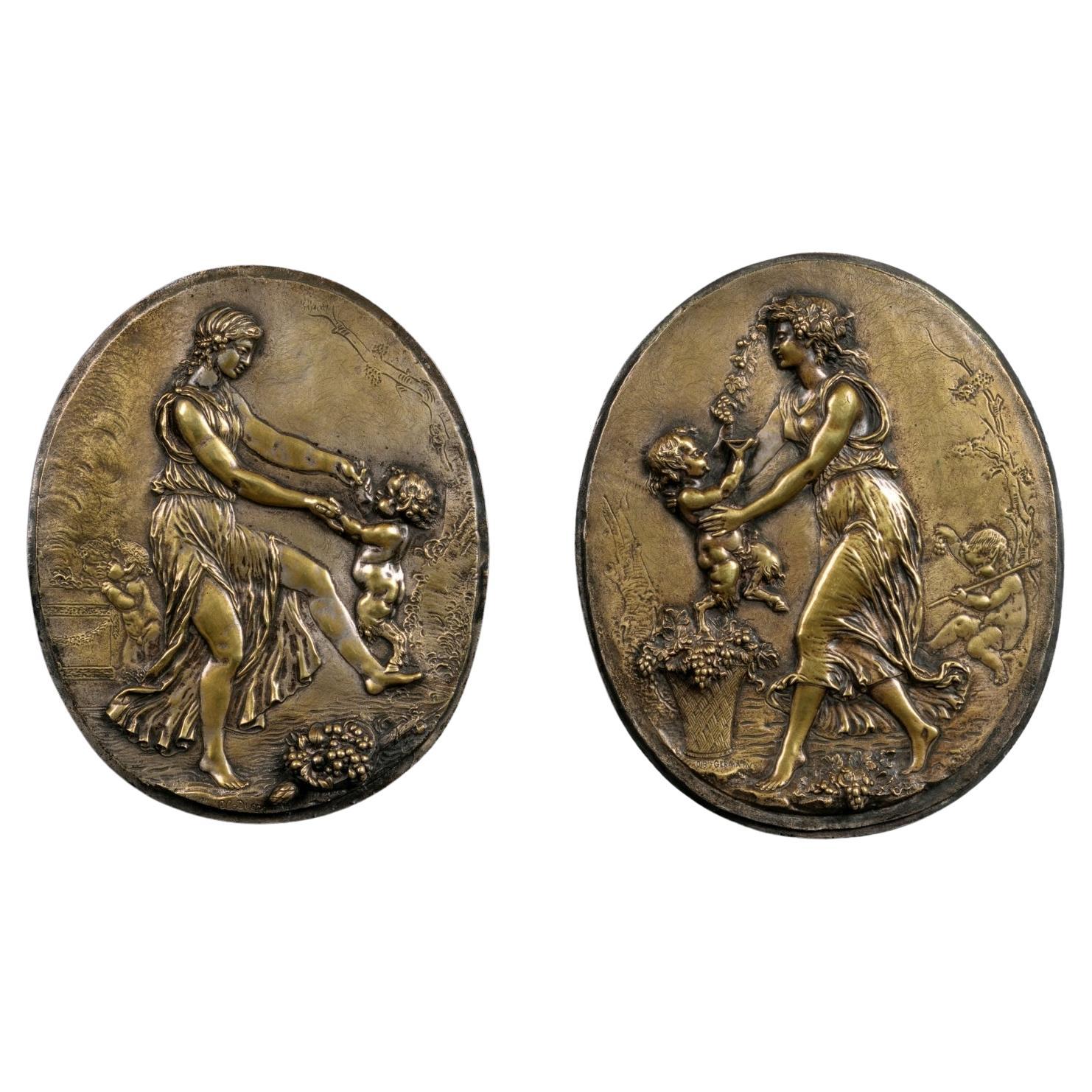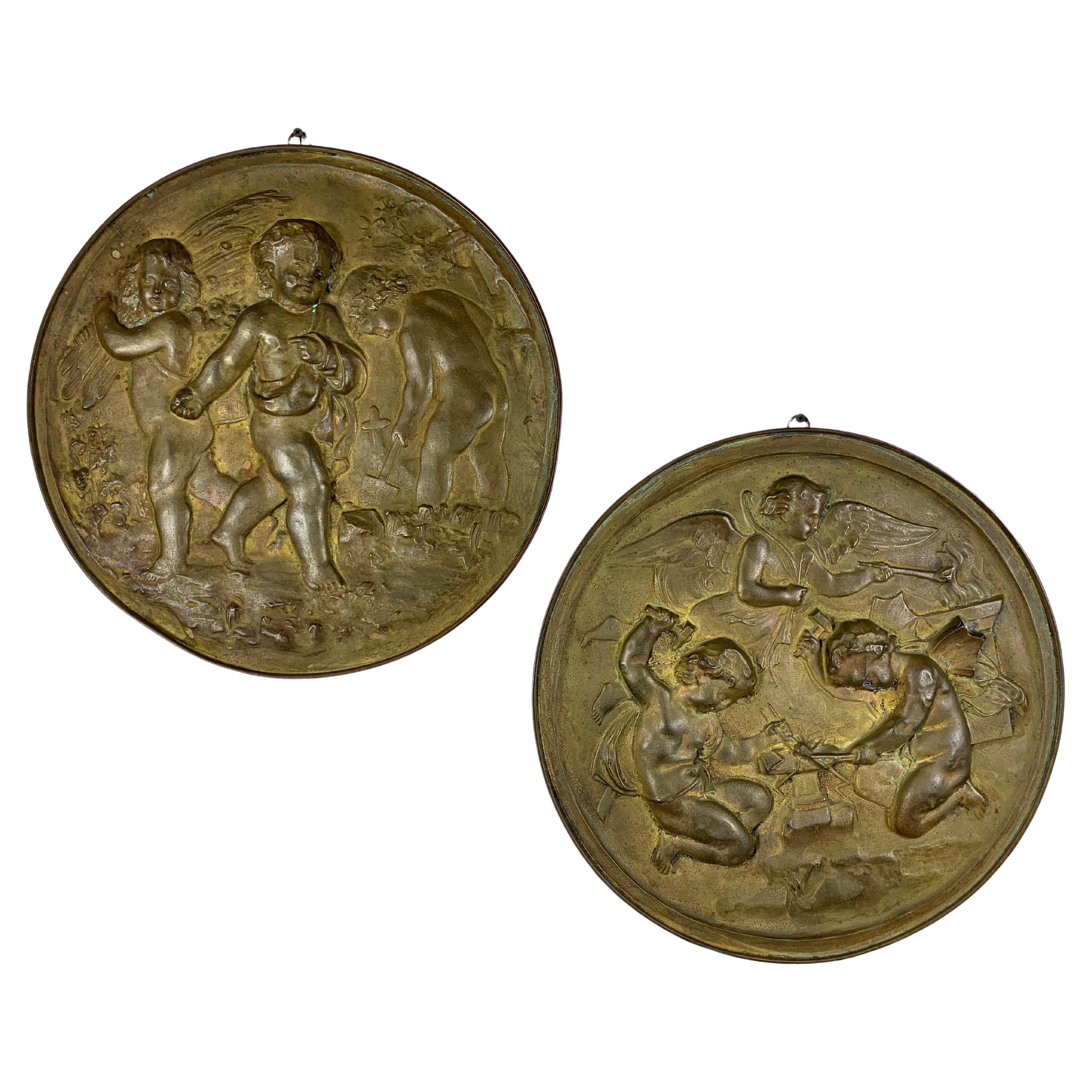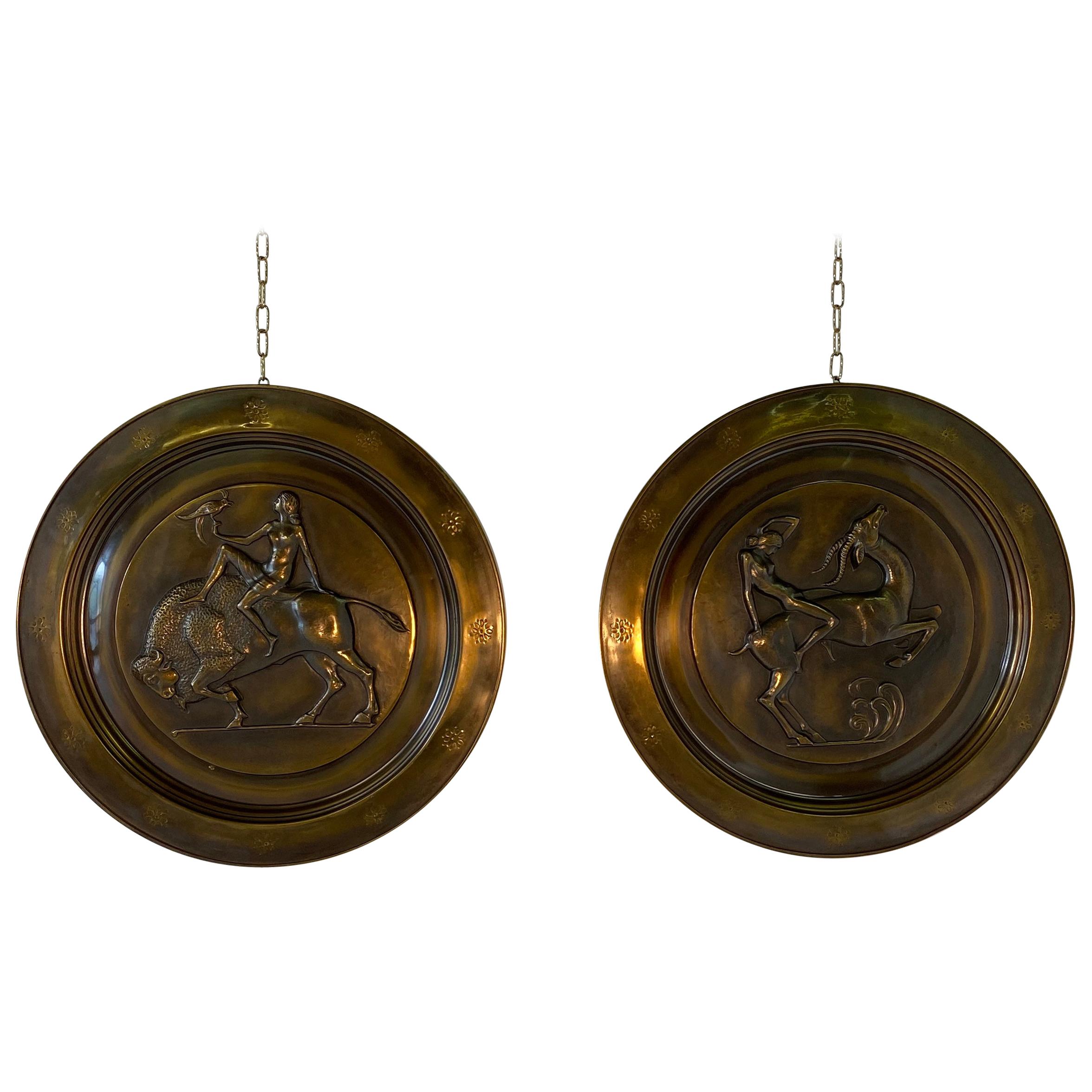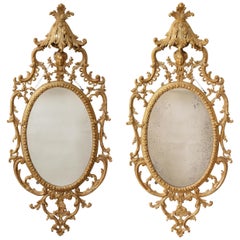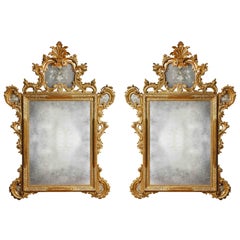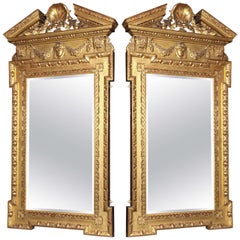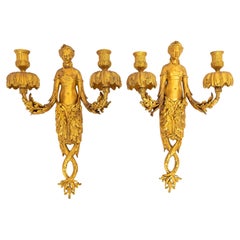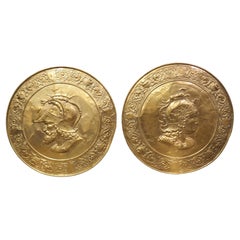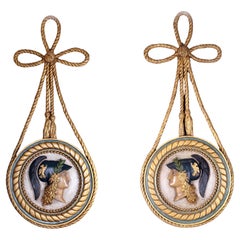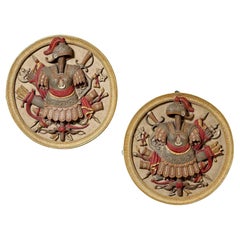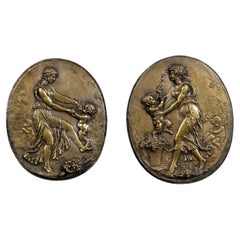Items Similar to Pair of Grand Tour Gilt Bronze circular shaped plaques of Roman Gladiators
Want more images or videos?
Request additional images or videos from the seller
1 of 10
Pair of Grand Tour Gilt Bronze circular shaped plaques of Roman Gladiators
$9,500per set
£7,163.94per set
€8,285.44per set
CA$13,328.45per set
A$14,815.40per set
CHF 7,765.91per set
MX$180,931.87per set
NOK 96,952.97per set
SEK 91,214.65per set
DKK 61,840.15per set
About the Item
A Fantastic Pair of 19th C. French Gilt Bronze Roman Solider Plaques of gladiators with Faux Marble Boarders. Each frame is beautifully hand-carved and the bronze medallions are in high-relief conveying Roman soldiers wearing helmets with long locks of hair. The interior boarder of each plaque is hand-painted with faux marble decoration. The finest 24K gilt decoration was used to adorn these plaques and create a beautiful matted finish which is very difficult to master over bronze. Each medallion is cast in bronze, as well as repousse and hand-chased. These gorgeous large plaques can be hung in any decor and create a fantastic look to all interiors. The finest details are all hand-done throughout demonstrating the wonderful craftsmanship to create these.
France, Circa: 1890
- Dimensions:Height: 1.5 in (3.81 cm)Diameter: 12 in (30.48 cm)
- Sold As:Set of 2
- Style:Louis XVI (In the Style Of)
- Materials and Techniques:
- Place of Origin:
- Period:
- Date of Manufacture:1890
- Condition:Wear consistent with age and use.
- Seller Location:New York, NY
- Reference Number:1stDibs: LU919537642922
About the Seller
4.9
Platinum Seller
Premium sellers with a 4.7+ rating and 24-hour response times
Established in 1820
1stDibs seller since 2011
194 sales on 1stDibs
Typical response time: <1 hour
- ShippingRetrieving quote...Shipping from: New York, NY
- Return Policy
Authenticity Guarantee
In the unlikely event there’s an issue with an item’s authenticity, contact us within 1 year for a full refund. DetailsMoney-Back Guarantee
If your item is not as described, is damaged in transit, or does not arrive, contact us within 7 days for a full refund. Details24-Hour Cancellation
You have a 24-hour grace period in which to reconsider your purchase, with no questions asked.Vetted Professional Sellers
Our world-class sellers must adhere to strict standards for service and quality, maintaining the integrity of our listings.Price-Match Guarantee
If you find that a seller listed the same item for a lower price elsewhere, we’ll match it.Trusted Global Delivery
Our best-in-class carrier network provides specialized shipping options worldwide, including custom delivery.More From This Seller
View AllPr. George III Gilt Carton-Pierre and Giltwood Oval Mirrors, Manner John Linnell
By John Linnell
Located in New York, NY
A fantastic and extremely rare pair of George III period gilt Carton-Pierre and giltwood oval mirrors in the manner of John Linnell. Each mirror is gorgeously hand carved with meticulous detail and fine craftsmanship. The giltwood borders are designed with foliate crests above female masks, with aprons centered by a standing or recumbent left facing lamb. It is extremely rare to find a pair of mirrors of this date and in such amazing untouched condition, the mirror panels are most probably original and date to the late 1700s.
Provenance: Jeremy, Ltd., London
England, circa 1770
Carton-pierre, literal translation from the French - cardboard stone, was developed in the 18th century specifically to imitate wood and stone. The Formula typically included flour, chalk, sawdust, sand and plaster and bound with wax, resin, animal glues or gum arabic. The material could be moulded, bent and otherwise formed into the desired design. Preeminent makers like Gillows and John Linnell began using carton pierre in the late 1760s. The new material allowed for lacey decorative spandrels and festoons that could be made into nearly any length or shape required. These elements and the particular foliate umbrella canopy on this pair of mirrors relates to designs of William and John Linnell. The most famous example of this crest element is on the mirror supplied by Linnell to the 4th Duke of Beaufort for the State Bedroom at Badminton House...
Category
Antique 1770s English George III Wall Mirrors
Materials
Mirror, Giltwood
Pair of 19th Century Italian Venetian Hand-Etched Carved Giltwood Mirrors
Located in New York, NY
A fantastic and large pair of 19th century Louis XV/Roccoco style Italian Giltwood Venetian hand-etched and hand engraved mirrors. These gorgeous mirrors are all hand-carved with scr...
Category
Antique 1850s Italian Louis XV Wall Mirrors
Materials
Mirror, Giltwood
Pair of George II/Neoclassical Style English 19th Century Giltwood Mirrors
Located in New York, NY
A fine pair of George II/neoclassical style English 19th century carved giltwood mirrors. The mirrors are structured as if each where a classical temple with linear architectural ele...
Category
Antique 19th Century English George II Mantel Mirrors and Fireplace Mirrors
Materials
Mirror, Wood
Pair of Louis XVI Period Ormolu Maiden-Form Neoclassical Wall Appliques/Sconces
Located in New York, NY
A Pair of Louis XVI Period (18th Century) Dore Bronze Maiden-Form Two-Arm Wall Appliques/Sconces. Each applique takes the form of a caryatid-style female figure and functions as a t...
Category
Antique 1790s French Louis XVI Wall Lights and Sconces
Materials
Ormolu
Pair of French Early 19th C. Patinated and Dore Bronze Egyptian Revival Chenets
Located in New York, NY
This pair of French chenets from the Early 1800s is a stunning example of Egyptian Revival design. The chenets feature a stately dark patina bronze sphynx...
Category
Antique 1820s French Empire Figurative Sculptures
Materials
Bronze
Pair of Antique French Louis XVI Style Dore Bronze Lyre Form Andirons/Chennets
Located in New York, NY
A fabulous pair of antique Louis XVI style French dore bronze lyre form Andirons/Chennets. Each is exceptionally cast, hand-chased, and chiseled with great precision and quality. The...
Category
Antique 1860s French Louis XVI Andirons
Materials
Bronze
$7,560 Sale Price / set
20% Off
You May Also Like
Set of Large 19th C. French Gilded Copper Repousse Chargers of Mars and Minerva
Located in Dallas, TX
Possibly inspired by a 1771 painting by Jacques-Louis David, this set of large gilded copper chargers depict the Roman deities, Mars and Minerva. The painting by David (Minerva Fight...
Category
Antique 19th Century French Neoclassical Decorative Art
Materials
Metal, Copper
Pair of 19th C Gilt Roundels
Located in Reepham, GB
Pair of 19th Century large scale gilt and painted roundels.
Depicting the heads of Athena and Minerva.
Minerva was the goddess of wisdom, war, art, schools, justice and commerce. Sh...
Category
Antique 19th Century Wall-mounted Sculptures
Materials
Giltwood
$26,006
Pair of Large Antique Roman Style Carved Roundels
Located in Wormelow, Herefordshire
An impressive pair of large scale antique Roman style carved roundels dating from the mid 19th century. Striking in subject and scale, these spectacular roundels will make stylish wa...
Category
Antique Mid-19th Century English Neoclassical Wall-mounted Sculptures
Materials
Gesso, Wood
Pair of Oval Bronze Reliefs After Clodion
By Claude Michel Clodion
Located in Brighton, West Sussex
A Pair of Oval Bronze Reliefs After Clodion.
Each inscribed to the cast Clodion.
Each plaque depicts a Bacchic scene of a maiden dancing with a young s...
Category
Antique 19th Century French Louis XV Figurative Sculptures
Materials
Bronze
Pair of 19th Century Angels at Work Brass Repousse Decorative Rounds
Located in Denton, TX
Pair of Antique 19th century angels at work brass repousse decorative rounds
One depicting harvesting the fields and the other refining by fire to ...
Category
Antique Late 19th Century French Belle Époque Decorative Art
Materials
Brass
Pair of Italian Art Deco Brass Plate, 1940s
Located in Meda, MB
Pair of hanging brass plates produced in Italy in the 1940s. The Classic Art Deco subjects are represented and are in their original patina of the time.
Small signs of wear due to age.
Category
Vintage 1940s Italian Art Deco Decorative Art
Materials
Brass
$1,073 / set
